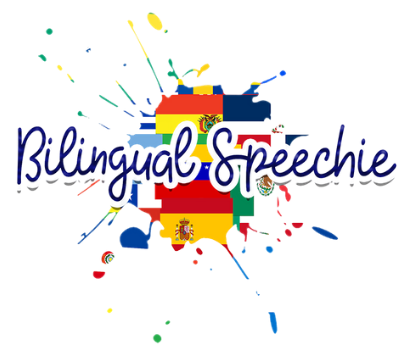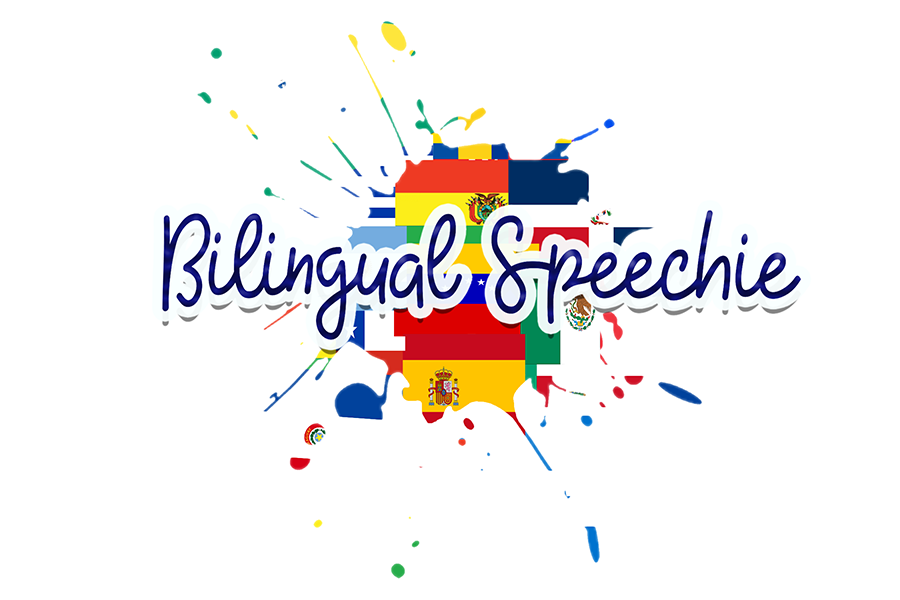por Liliana Diaz julio 23, 2023
Have a student on your caseload that is demonstrating difficulty producing the CH sound? Perhaps you're a parent whose child is in speech therapy working on the CH sound?
The CH sound can be a tricky sound to teach because it's hard to visualize what's going on inside the mouth when saying the sound. But no worries, here are some tips to help achieve that tricky CH sound. These tricks have helped several of my students produce the sound in no time!
First let's begin by understanding how the sound is made. The CH sound is a palato-alveolar sound, WHAT DOES THIS EVEN MEAN??? Simple, the CH sound is made when your tongue makes contact with the hard palate. To make the CH sound your tip of the tongue and blade of the tongue has to make contact with the alveolar ridge (bumpy part of your mouth) and the sides of the tongue come in contact with your upper molars in order to stop the airflow and make that sound nice and short. Also, it's important that your child or client knows that the lips must be rounded like an "O" to make the sound.

For smaller children, I like to refer to this sound as the "Chu-Chu" sound and imitate the sound a train makes. Children learn best through play therefore, I bring out all the toy trains and we imitate the sound as much as possible during the session. It also helps to have a visual for the child throughout the session so I use the train flashcard from my Bilingual Articulation CH Flashcard deck.

A lot of my students who are having difficulty saying the CH sound often substitute the sound for an SH sound. Therefore, we compare the two sounds by using a visual. On a sheet of paper, I draw a long line to represent SH because the airflow is long. Then I draw a short like for CH to show that the airflow and sound are short in length. It helps my student understand that the CH sound needs to be as short as possible.

More visuals! I often explain to my students that CH is kind of like an SH but it's a very MAD and HARD SH. We practice saying the SH sound as HARD and as possible and then I cue the student to cut the airflow nice and short (usually by clapping my hands really quick).
A trick that has always helped achieve the CH sound is to practice saying a T sound followed by an SH sound several times. Start slow, and then go as fast as you can. Saying the 2 sounds REALLY fast makes the CH sound. Try it below!
T-SH-T-SH-T-SH-T-SH-T-SH
Lastly, I always recommend to PRACTICE, PRACTICE, PRACTICE! For my bilingual students, I always ensure that they can practice the sound in both languages; therefore, it's important to use cognate word pairs in my word selections to ensure carry-over into both languages.
Practice words like: Churro/Churro, Nachos/Nachos, Chocolate/Chocolate
For more practice words make sure to check out my Bilingual Articulation CH Flashcards!
Los comentarios se aprobarán antes de mostrarse.
por Liliana Diaz diciembre 14, 2023
por Liliana Diaz febrero 13, 2023 1 Comentario
por Liliana Diaz enero 12, 2023
Perhaps you recently got assigned to a new school or site that consists of a large bilingual and/or multilingual caseload, and perhaps you're not bilingual. Not speaking the student's language can be quite overwhelming and stressful (trust me, I've been there!). I know the feeling of not quite knowing where to start in intervention, or not knowing how to support your students. Well luckily, bilingual SLP, Ingrid Owens-Gonzalez has some important tips to share with all SLPs. Here are 3 things Monolingual SLPs can do to support bilingual populations today.

¡Bienvenidos! ¡Soy Bilingual Speechie y este es mi blog de logopedia! ¡Aquí encontrará recursos y actividades bilingües (inglés y español) para la terapia del habla y lenguaje! ¡Estoy aquí para hacerles la vida más fácil!
Mi nombre es Liliana Díaz-Vázquez y obtuve mi licenciatura en trastornos de la comunicación en 2012 y mi maestría en patología del habla y lenguaje en la Universidad Saint Xavier en 2014.
Soy patóloga del habla y lenguaje bilingüe certificada (SLP) y actualmente trabajo en Chicago, Illinois. ¡Me apasiona trabajar con la población bilingüe! Me especializo en pediatría con niños de edades 1 a 18 años y principalmente trabajo con estudiantes bilingües y hispanohablantes en programas de educación general, programas preescolares y programas de educación especial.
Actualmente trabajo a tiempo completo en las escuelas públicas y a tiempo parcial en intervención temprana. También tengo mi propio blog y creo todo tipo de recursos / actividades bilingües que utilizo con mis propios clientes. Tengo una amplia experiencia en el tratamiento y la evaluación de una variedad de trastornos. He trabajado con niños con autismo, síndrome de Down, deficiencias cognitivas, discapacidades de aprendizaje, apraxia, trastornos de fluidez, trastornos del lenguaje y retrasos en el desarrollo.
Mis áreas de especialización incluyen comunicación aumentativa / alternativa (CAA), desarrollo del lenguaje bilingüe y la evaluación y tratamiento de retrasos / trastornos del lenguaje en niños bilingües.
Soy miembro de la American Speech-Language and Hearing Association (ASHA) desde el 2014, miembro de la Illinois Speech and Hearing Association (ISHA) desde el 2014 y tengo mi licencia en el estado de Illinois.
Además de trabajar con familias y niños, ¡soy un "foodie" de medio tiempo! ¡Sígueme en las redes sociales para ver todas mis aventuras gastronómicas en Chicago!
 Español
es
Español
es
 English
en
English
en
 Español
es
Español
es


Liliana Diaz
Autor